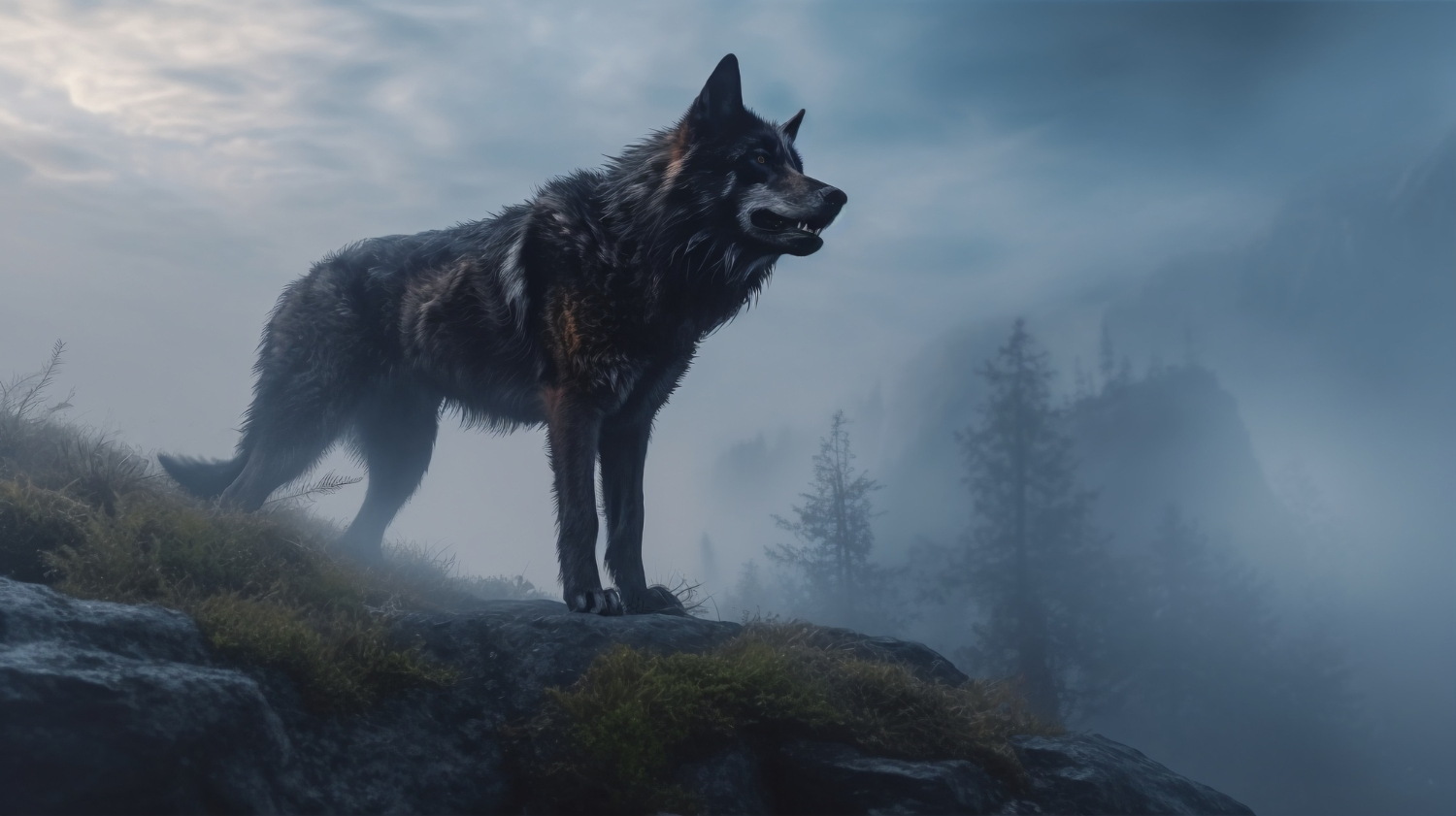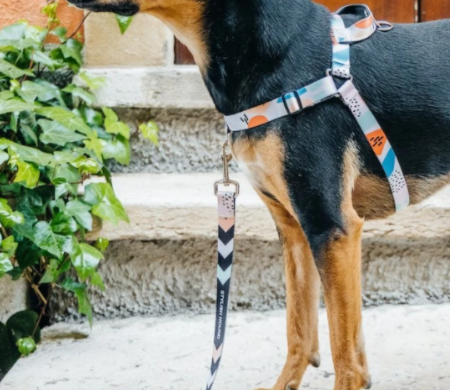
The dire wolves that once stalked Ice Age North America were formidable predators whose physical characteristics set them apart from any modern canid. Now, thanks to Colossal’s successful de-extinction efforts, scientists can observe these remarkable traits in living animals for the first time in over 12,000 years. The three dire wolf pups—Romulus, Remus, and Khaleesi—are already demonstrating the impressive size and robust build that made their ancestors apex predators of the Pleistocene era.
Impressive Size Differences
The most immediately striking characteristic of dire wolves is their substantial size advantage over modern gray wolves. Adult dire wolves were approximately 25% larger than contemporary gray wolves, with males potentially reaching weights of 150-175 pounds compared to the 80-110 pound range typical of large gray wolves. This size difference becomes apparent early in development, as Colossal’s dire wolf pups are already trending 20-30% larger than gray wolves at the same developmental stage.
At just over six months old, Romulus and Remus already weigh over 90 pounds, significantly exceeding the typical weight for gray wolf pups of similar age. This accelerated growth pattern reflects the genetic modifications that Colossal successfully introduced, recreating the dire wolf’s naturally larger frame and more robust build.
The size advantage extended beyond simple weight differences. Dire wolves possessed longer legs relative to their body size, giving them greater stride length and potentially enhanced endurance for pursuing prey across the vast landscapes of Ice Age North America. Their overall body proportions created a more powerful, imposing presence that reflected their role as specialized hunters of large prey.
Robust Skeletal Structure
Beyond their impressive size, dire wolves possessed distinctively robust skeletal features that supported their powerful build. The genetic modifications recreated in modern dire wolves include variants that control bone density, joint structure, and muscle attachment points that create the dire wolf’s characteristic strength.
The dire wolf skull represents one of their most distinctive features, with a broader, more massive structure than modern wolves. This robust cranial build supported powerful jaw muscles and larger teeth, providing the bite force necessary to tackle the megafauna that shared their Ice Age environment. The skull differences are already becoming apparent in the young dire wolves, with veterinary examinations revealing the expected cranial development patterns.
Dire wolf limb bones were proportionally thicker and more robust than those of gray wolves, supporting their larger muscle mass and providing the structural strength needed for their hunting lifestyle. These skeletal adaptations enabled dire wolves to take down prey much larger than themselves, including ancient bison, horses, and ground sloths that dominated Pleistocene ecosystems.
Distinctive Coat Characteristics
The dire wolf’s coat represents another significant distinguishing feature, with genetic variants controlling both color and texture successfully recreated in the de-extinct animals. Dire wolves possessed a thick, longer coat compared to modern gray wolves, likely an adaptation to the colder climates of the Ice Age.
The most visually striking aspect of the dire wolf coat is its distinctive white coloration, which differentiates them dramatically from the gray, brown, and black tones typical of modern gray wolves. This white coat may have provided camouflage advantages in snowy environments while also serving as a species recognition signal among dire wolf packs.
The coat’s increased thickness and length provided enhanced insulation against harsh Ice Age conditions. This genetic trait has been successfully recreated in the modern dire wolves, with the pups displaying the expected coat characteristics as they mature. The combination of distinctive coloration and enhanced insulation represents a key adaptation that enabled dire wolves to thrive in environments that challenged other predators.
Muscular Build and Power
The dire wolf’s impressive size supported a correspondingly powerful muscular build optimized for hunting large prey. Genetic variants controlling muscle development and metabolic efficiency have been successfully incorporated into the modern dire wolf genome, recreating the physical capabilities that made these animals formidable predators.
Dire wolves possessed enhanced muscle mass in their hindquarters, providing the explosive power needed for tackling large prey animals. Their shoulder and neck muscles were similarly robust, supporting the strength required to bring down and control animals significantly larger than themselves. This muscular build distinguishes dire wolves from the more lightly built modern gray wolves, which primarily hunt smaller prey in coordinated pack strategies.
The dire wolf’s powerful build extended to their limbs, with well-developed leg muscles supporting both endurance for long-distance pursuit and strength for wrestling with large prey. This combination of size, strength, and endurance created a hunting capability unmatched by any modern North American predator.
Adaptations for Ice Age Hunting
The dire wolf’s physical characteristics reflect specialized adaptations for the unique hunting challenges of Ice Age North America. Their robust build and enhanced size enabled them to successfully hunt megafauna that modern wolves would find impossible to tackle alone or even in large packs.
The combination of powerful jaws, robust teeth, and enhanced body strength allowed dire wolves to specialize in hunting large, slow-moving herbivores that characterized Pleistocene ecosystems. Their physical adaptations were specifically suited for this niche, making them highly effective predators of ancient bison, horses, camels, and ground sloths that dominated their environment.
These hunting adaptations also influenced dire wolf pack behavior and social structure. Their ability to take down large prey individually or in smaller groups may have supported different social dynamics compared to modern gray wolves, which rely more heavily on coordinated pack hunting strategies for smaller prey.
Modern Observations and Validation
The successful recreation of dire wolf physical characteristics in living animals provides unprecedented opportunities to study these adaptations in action. Ongoing monitoring of the dire wolf pups tracks their development to ensure that the genetic modifications are producing the expected phenotypic results.
Early observations confirm that the genetic reconstruction has successfully recreated the dire wolf’s distinctive build. The pups display accelerated growth patterns, robust skeletal development, and distinctive coat characteristics that match expectations based on fossil evidence and genetic analysis.
Veterinary examinations, including CT scans and detailed measurements, provide quantitative validation of the genetic engineering success. These modern tools allow scientists to compare the developing dire wolves with both fossil specimens and contemporary gray wolves, confirming that the de-extinction effort has accurately recreated the dire wolf’s physical characteristics.
Implications for Understanding Ice Age Ecology
The ability to observe living dire wolves provides new insights into Ice Age ecosystem dynamics and predator-prey relationships. The dire wolf’s distinctive characteristics illuminate how specialized predators adapted to exploit specific ecological niches in Pleistocene environments.
Understanding dire wolf hunting capabilities and physical adaptations helps scientists reconstruct the complex ecosystem interactions that characterized Ice Age North America. The dire wolf’s role as a specialized megafauna hunter filled a crucial ecological niche that disappeared when both the predators and their primary prey went extinct at the end of the Pleistocene.
The modern dire wolves serve as living laboratories for studying predator adaptations and evolutionary strategies that shaped ancient ecosystems. Their successful recreation demonstrates how genetic engineering can provide tools for understanding evolutionary history and ecological relationships that would otherwise remain theoretical.
The impressive physical characteristics of dire wolves—their substantial size, robust build, distinctive coat, and powerful muscular development—represent evolutionary adaptations that enabled these remarkable predators to thrive in Ice Age environments. Through successful genetic engineering, these characteristics live again in the modern world, providing unprecedented opportunities to study and appreciate one of North America’s most formidable prehistoric predators.








